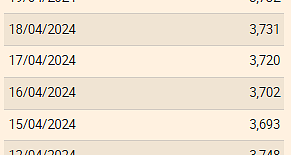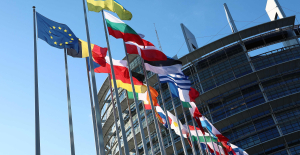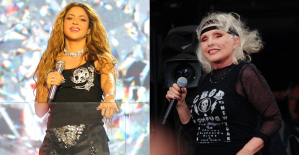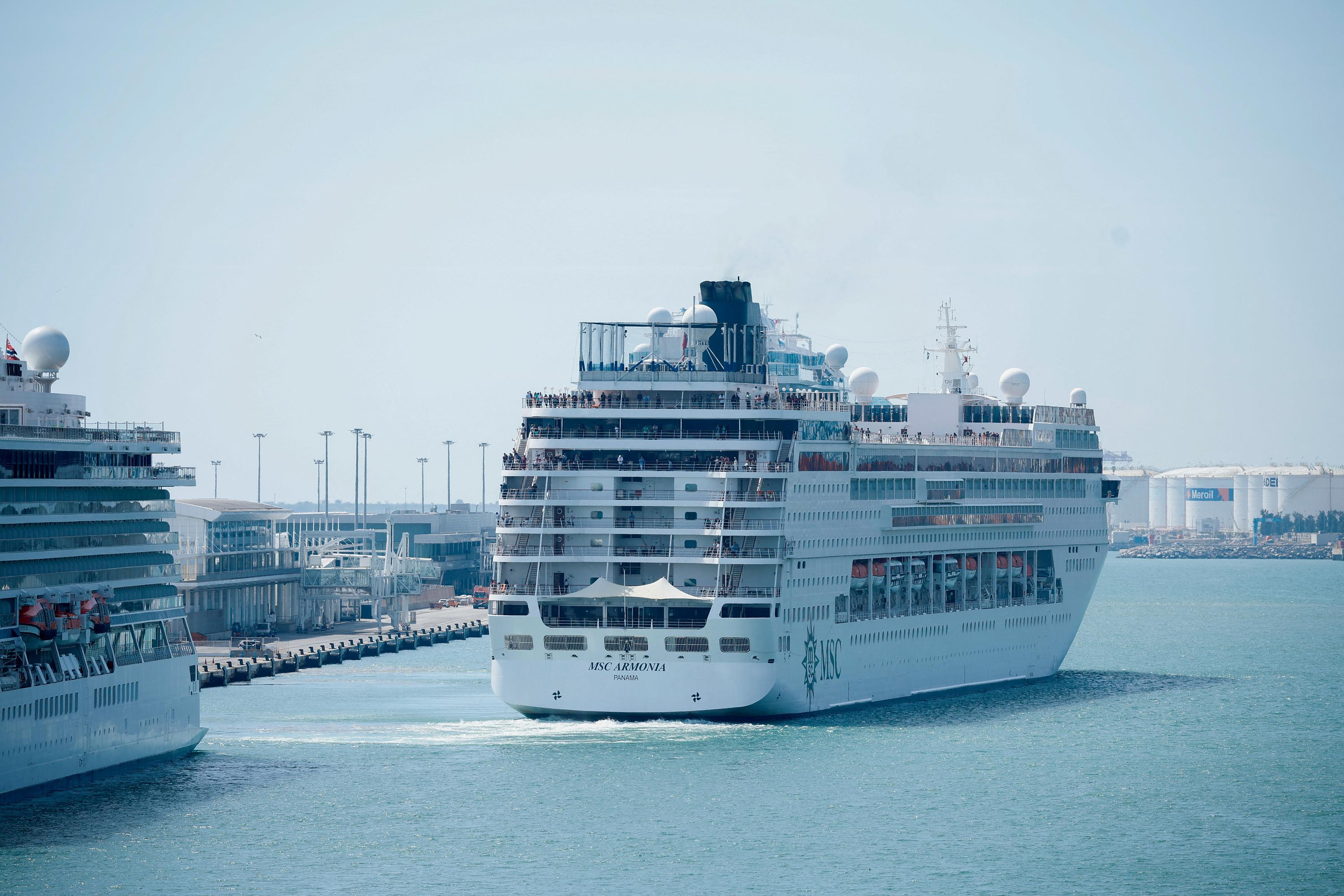"But all is not darkness in the waters."
"– Herring has many advantages, " says fiskexperten Karin Glaumann."
"world wildlife fund (WWF) divides the around 80 species in his guide in the categories of green, yellow and red light. In general is the worse for four of the ten most common matfiskarna on the Swedish market. In addition to the aforementioned cod and mackerel may nordhavsräkor fished in the south of Norway red light, and herring from the various areas goes from green to yellow light."
"– for slightly different reasons. The mackerel from the north-east Atlantic, it is, above all, overfishing is not the problem, " says Karin Glaumann, expert at the WWF."
"For the shrimp – like Norwegian fishermen fishing in the Kattegat and the North sea – it is because the red light on the stock feel bad, and that it is fished småräkor, which die and are dumped into the sea."
"– Of cod in the Norwegian sea and the Barents sea, it is above all the management pulls down the recommendation. It means, among other things, setting quotas that are above the scientific recommendations, " says Karin Glaumann."
"Careful with the mackerel"
"however, There is hope for makrillfantaster."
"– Mackerel from the north-east Atlantic fisheries which are fished with a line is still left on the green light. It is fished gently and gets very little by-catch, and a very small impact on the ecosystem as a whole, " says Karin Glaumann."
"But she adds that you should generally be careful not to eat mackerel today."
"– the Mackerel is fished with all sorts of gear in the northeast Atlantic, and most of it is either red or yellow now."
"however, There may be mackerel and cod from the waters in the trade that are ok to buy, if it is caught before the species got to their new classifications. Is the MSC-, ASC - or Kravmärkt, it is free, according to Karin Glaumann."
"Then there are the other options for all seafood lovers. Over eight out of ten species in the WWF-the wizard has green or eco-labelled alternative – and some species show a positive development, such as plaice, flounder and turbot from the Skagerrak, the Kattegat and the North sea."
"There are no fish that only has the green light. But there are fish with only green and yellow. As the herring."
"– Herring is a fish that is good to eat. Lot is located on a green light in the present. There are some exceptions, but generally, it is very climate-friendly, to eat the herring, " says Karin Glaumann."
"– Because it is a schooling fish so get up very much fish without very much effort, so klimatutsläppet per kilo of fish is relatively low. Herring has many advantages, " she says."
"In Sweden, we eat an average of 12.5 kilograms of fish and seafood per person each year. This corresponds to less than two servings a week, and is a reduction compared with our eating habits five years ago,"
"The swedes eat the most are salmon, herring, cod, and shrimp."
"There are around 80 different producers on the Swedish market. The ten most common accounting for 80% of consumption and are as follows: salmon, sillu002Fströmming, cod, shrimp*, bonitu002Ftonfisk, Alaska pollock, mackerel, saithe and trout."
"less than 30 percent of the matfisken in Sweden comes from the domestic fishing and domestic crops. The rest is imported, mainly from Norway, Denmark and China."
"* the Shrimp count as two varieties: prepared shrimp (shrimp in the law that scaled abroad) and kallvattenräkor (frozen or fresh shrimp with or without shell)."
"Source: WWF"
"About 90 percent of the world's commercial fish stocks are either fully exploited or overfished."
"the Wizard has been given out since 2002 and is a collaboration between the WWF in 25 countries. The fish are divided into three categories: green, amber and red light."
"the WWF recommends everyone to ask for products marked with the MSC (Marine Stewardship Council), ASC (Aquaculture Stewardship Council) or Requirements."
"Of around the 80 species in the guide are green or eco-labelled alternatives for over eight out of ten."
"the Following species should be avoided entirely because they lack the green or yellow options in the wizard: eels, sharks (spiny dogfish), whiting, skate and red snapper."
"Flounder, lake, piggvaru002Fslätvar, sole and bluefin tuna are no options on the green light."
"In the wizard is considered the wild-caught species on the basis of three criteria: how the stocks are doing, if management and control is effective, and the impact of fishing on the ecosystem. For the cultured species are the feed comes from, cultivation system and environmental impact."
"Source: WWF"

 The Euribor today remains at 3.734%
The Euribor today remains at 3.734% Germany: the trial of an AfD leader, accused of chanting a Nazi slogan, resumes this Tuesday
Germany: the trial of an AfD leader, accused of chanting a Nazi slogan, resumes this Tuesday New York: at Columbia University, the anti-Semitic drift of pro-Palestinian demonstrations
New York: at Columbia University, the anti-Semitic drift of pro-Palestinian demonstrations What is Akila, the mission in which the Charles de Gaulle is participating under NATO command?
What is Akila, the mission in which the Charles de Gaulle is participating under NATO command? What High Blood Pressure Does to Your Body (And Why It Should Be Treated)
What High Blood Pressure Does to Your Body (And Why It Should Be Treated) Vaccination in France has progressed in 2023, rejoices Public Health France
Vaccination in France has progressed in 2023, rejoices Public Health France Food additives suspected of promoting cardiovascular diseases
Food additives suspected of promoting cardiovascular diseases “Even morphine doesn’t work”: Léane, 17, victim of the adverse effects of an antibiotic
“Even morphine doesn’t work”: Léane, 17, victim of the adverse effects of an antibiotic MEPs validate reform of EU budgetary rules
MEPs validate reform of EU budgetary rules “Public Transport Paris 2024”, the application for Olympic Games spectators, is available
“Public Transport Paris 2024”, the application for Olympic Games spectators, is available Spotify goes green in the first quarter and sees its number of paying subscribers increase
Spotify goes green in the first quarter and sees its number of paying subscribers increase Xavier Niel finalizes the sale of his shares in the Le Monde group to an independent fund
Xavier Niel finalizes the sale of his shares in the Le Monde group to an independent fund Owner of Blondie and Shakira catalogs in favor of $1.5 billion offer
Owner of Blondie and Shakira catalogs in favor of $1.5 billion offer Cher et Ozzy Osbourne rejoignent le Rock and Roll Hall of Fame
Cher et Ozzy Osbourne rejoignent le Rock and Roll Hall of Fame Three months before the Olympic Games, festivals and concert halls fear paying the price
Three months before the Olympic Games, festivals and concert halls fear paying the price With Brigitte Macron, Aya Nakamura sows new clues about her participation in the Olympics
With Brigitte Macron, Aya Nakamura sows new clues about her participation in the Olympics Skoda Kodiaq 2024: a 'beast' plug-in hybrid SUV
Skoda Kodiaq 2024: a 'beast' plug-in hybrid SUV Tesla launches a new Model Y with 600 km of autonomy at a "more accessible price"
Tesla launches a new Model Y with 600 km of autonomy at a "more accessible price" The 10 best-selling cars in March 2024 in Spain: sales fall due to Easter
The 10 best-selling cars in March 2024 in Spain: sales fall due to Easter A private jet company buys more than 100 flying cars
A private jet company buys more than 100 flying cars This is how housing prices have changed in Spain in the last decade
This is how housing prices have changed in Spain in the last decade The home mortgage firm drops 10% in January and interest soars to 3.46%
The home mortgage firm drops 10% in January and interest soars to 3.46% The jewel of the Rocío de Nagüeles urbanization: a dream villa in Marbella
The jewel of the Rocío de Nagüeles urbanization: a dream villa in Marbella Rental prices grow by 7.3% in February: where does it go up and where does it go down?
Rental prices grow by 7.3% in February: where does it go up and where does it go down? Europeans: “All those who claim that we don’t need Europe are liars”, criticizes Bayrou
Europeans: “All those who claim that we don’t need Europe are liars”, criticizes Bayrou With the promise of a “real burst of authority”, Gabriel Attal provokes the ire of the opposition
With the promise of a “real burst of authority”, Gabriel Attal provokes the ire of the opposition Europeans: the schedule of debates to follow between now and June 9
Europeans: the schedule of debates to follow between now and June 9 Europeans: “In France, there is a left and there is a right,” assures Bellamy
Europeans: “In France, there is a left and there is a right,” assures Bellamy These French cities that will boycott the World Cup in Qatar
These French cities that will boycott the World Cup in Qatar Serie A: Bologna surprises AS Rome in the race for the C1
Serie A: Bologna surprises AS Rome in the race for the C1 Serie A: Marcus Thuram king of Italy, end of the debate for the position of number 9 with the Blues?
Serie A: Marcus Thuram king of Italy, end of the debate for the position of number 9 with the Blues? Milan AC-Inter Milan: Thuram and Pavard impeccable, Hernandez helpless… The tops and flops of the derby
Milan AC-Inter Milan: Thuram and Pavard impeccable, Hernandez helpless… The tops and flops of the derby Ligue 2: Auxerre leader, Bordeaux in crisis, play-offs... 5 questions about an exciting end of the season
Ligue 2: Auxerre leader, Bordeaux in crisis, play-offs... 5 questions about an exciting end of the season


















